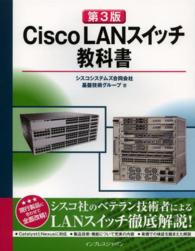Full Description
In this book, we review many examples of multimedia item types for testing. We also outline how games can be used to test physics concepts — discuss designing chemistry item types with interactive graphics; study how culture-specific linguistics can help inner-city kids and new immigrants learn better; suggest approaches for automatically adjusting difficulty level in interactive graphics-based questions; and propose strategies for giving partial marks for incorrect answers. We also study how to test different cognitive skills, such as music, using multimedia interfaces and also evaluate the effectiveness of our model. Methods for estimating difficulty levels of mathematical item types using Item Response Theory (IRT) will be discussed. Examples of item shells for human computer interaction and cell phones will be shown.
Contents
The Trend Towards Online Multimedia Education and Its Advantages Over Traditional Methods; Framework of an Online Multimedia Education System; Innovative Item Types for Learning and Testing; Educational Games; Item Shells for Automatic Generation of Multiple Items; Testing Intelligence and Problem Solving Skills; Student Modeling; Adaptive Testing and Item Response Theory; Educational Item Authoring; Multimedia Education on Mobile Devices; Human Computer Interaction, Affective Education and User Evaluation.








